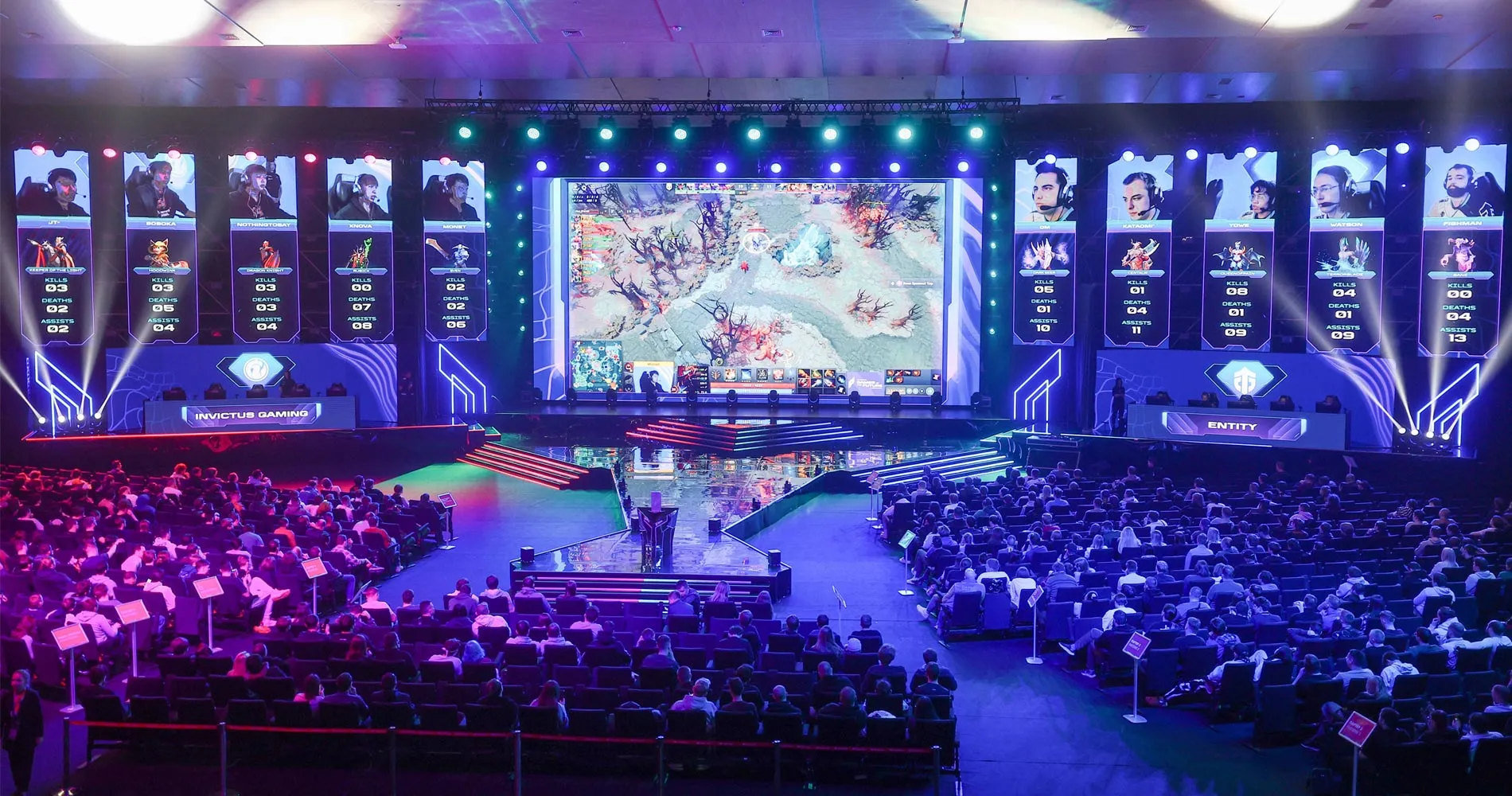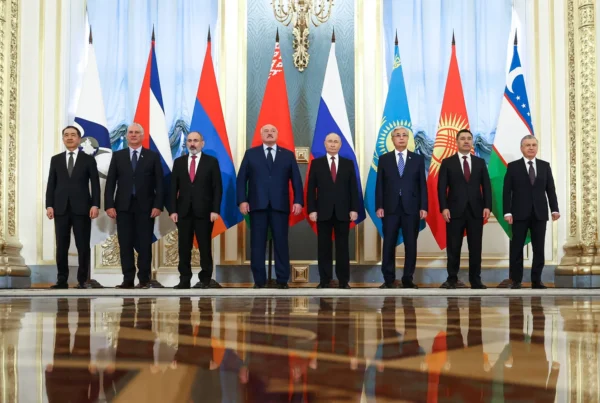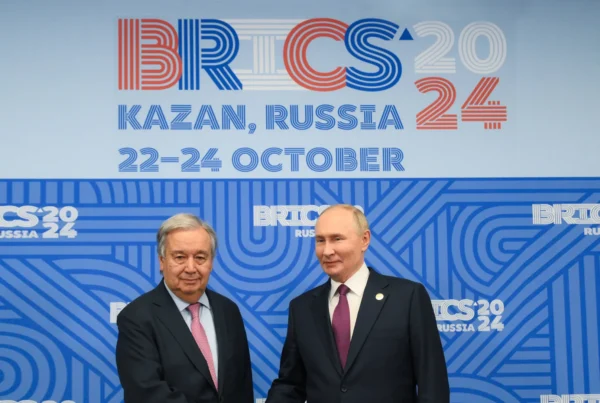The landscape of sports is undergoing a transformative shift, ushering in an era of innovation epitomized by phygital games. This new sport is a fusion of traditional athletic disciplines with elements of cybersports, creating a unique hybrid that captures the attention of athletes and spectators worldwide.
Murat Gibadyukov, 26 February 2024
From 21 February to 3 March 2024, the city of Kazan in Russia will host the inaugural Games of the Future, a cutting-edge international tournament set to showcase the forefront of technological athleticism. The inception of the Games of the Future dates back to September 2021, followed by the first phygital tournament held in September 2022. Since then, nine qualifying tournaments have paved the way for the highly anticipated climax of the Games of the Future. On 31 January 2023, phygital sports were officially recognized and included in the Russian register of sports and sports disciplines, which later led to the establishment of the world’s first federation of phygital sports.
Over 2000 athletes representing more than 275 teams from over 100 countries will compete for supremacy in this multifaceted competition. Beyond cybersports teams and streamers, the Games of the Future will also welcome professional athletes from various disciplines.
Notable figures such as Tokyo Olympics silver medalist Daniel Ders and 15-time X Games champion Garrett Reynolds are slated to compete in the phygital-BMX tournament, adding prestige to the event. Furthermore, esteemed phygital teams affiliated with renowned soccer clubs, including Russian Lokomotiv and Rotor, Turkish Besiktas, Serbian Crvena Zvezda, and Brazilian R10 Team, will grace the tournament with their presence.
The opening ceremony of the Games of the Future took place on 21 February 2024, at the well-known KazanExpo exhibition center. High-level representatives and heads of state from various nations were in attendance, including President Vladimir Putin of Russia, President Milorad Dodik of Serbia, President Alexander Lukashenko of Belarus, President Kassym-Jomart Tokayev of Kazakhstan, President Shavkat Mirziyoyev of Uzbekistan, President Sadyr Zhaparov of Kyrgyzstan, and President Emomali Rakhmon of Tajikistan.
What are Phygital Sports?
Phygital gaming represents a pioneering form of sports, ingeniously blending elements of the physical and digital realms. Rooted in the fusion of “physical” and “digital,” these games intricately intertwine virtual environments with real-world action. For instance, competitions may commence in a virtual setting and seamlessly transition to physical sports, with results from both stages combined to determine the victor.
Phygital games span a diverse array of categories, each offering its own set of challenges and opportunities:
- Sports challenges: Incorporating a spectrum of athletic endeavors such as soccer, basketball, hockey, and martial arts, these challenges seamlessly blend virtual simulations with real-world sporting action. For example, a phygital soccer match might commence with a FIFA simulation before transitioning to a live soccer field.
- Tactical challenges: This category encompasses tactical shooters and battle royales like CS:GO, Valorant, PUBG Mobile, and Fortnite, where real-world engagement may manifest through strikeball or laser tag activities.
- Battle challenges: Participants immerse themselves in multiplayer battle games such as Dota 2, League of Legends, and Arena of Valor, with elements of laser tag and strikeball seamlessly integrated into real-world gameplay.
- Speedrun challenges: Retro speedrunning games like Super Mario Bros and Chip ‘n Dale provide participants with thrilling opportunities to showcase their agility and gaming prowess in a race against time.
- Technical challenges: Virtual reality drone races and games like Beat Saber, which harness VR technology, offer an exhilarating blend of physical and digital engagement.
Origins and Evolution of Phygital Games
The genesis of phygital games stems from the dynamic evolution of both traditional and cybersports disciplines. While pinpointing the exact origins and creators of this innovative concept remains elusive, its inception reflects the natural progression of merging classic and cyber sports. Drawing from a rich history spanning over a century, traditional sports have cultivated a diverse ecosystem of professionals, ranging from athletes and referees to coaches and sports administrators.
In contrast, the growth in popularity of cybersports in the late 20th century heralded a new era of digital athleticism, marked by roles such as players, referees, and competition organizers. As cybersports matured, it catalyzed the emergence of a plethora of new digital-centric professions, from internet broadcasters and cyber sports managers to content creators and streamers.
The evolution of phygital games represents a culmination of these parallel trajectories, driven by a collective ambition to redefine entertainment and sports for enthusiasts of both virtual gaming and active lifestyles. From humble beginnings as experimental prototypes where physical actions influenced digital gameplay, phygital games have evolved into sophisticated spectacles, facilitated by cutting-edge sensor technologies, and specialized gaming devices.
The Future of Phygital Sports
As technology continues to advance, phygital games hold immense promise as a transformative force in the world of sports and entertainment. By seamlessly integrating with traditional sports, these games offer a compelling avenue for innovation, fostering unparalleled experiences that unite the excitement of cybersports with the energy of physical athleticism.
The future of phygital games shines brightly, poised to captivate audiences, and redefine the sporting landscape for generations to come. The Games of the Future in Kazan will play an important role in developing phygital sports.







